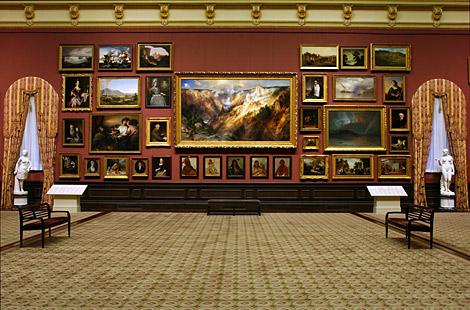
Stereograph of the Renwick Gallery, date unknown

The grand Renwick Gallery, which is part of SAAM, was built in the mid nineteenth century to house the art collection of Washington banker and philanthropist William Wilson Corcoran. From the beginning the Renwick was an important building, and Corcoran was a superstar mover and shaker in D.C. But, how could a building with such an illustrious pedigree almost have fallen victim to the bulldozers in the 1960s? That's just one of the remarkable things I learned about the Renwick in a recent talk by local architect Judith Capen.
Corcoran chose the young architect James Renwick to build a new home for his art. Young, connected, and wealthy, Renwick, according to Capen, was "the Frank Gehry of his time." He was also the architect for the Smithsonian Castle, as well as St. Patrick's Cathedral and Grace Church in Manhattan. To get the project off of the ground, Renwick and Corcoran traveled to Paris in the 1850s to visit the new Tuileries addition at the Louvre that had been built in the French Second Empire style.
The building we lovingly call the Renwick has seen some major changes in its life, though it still appears today much as the architect intended. During and after the Civil War, from 1861 to 1869, the building housed the Quartermaster General. It became the Corcoran Gallery of Art in 1869 and was home to that collection for nearly thirty years. For more than sixty years from 1898 it was the United States Court of Claims. Capen's images showed that this was not the happiest time for the building. The grand salon was chopped into two separate rooms, and the building became a kind of glorified office building. I found it interesting that gas lights with open flames were employed in many of the rooms.
Flash forward to the 1950s and 1960s and the building is saved from urban renewal (i.e. demolition) by the combined efforts of President and Mrs. Kennedy, as well as Lyndon Johnson.
Capen closed her comments with a wonderful observation that architects will love: "The Renwick is the only building in Washington, D.C., named for its architect." I kind of like that too.
Come take a look at the Renwick's Grand Ballroom. And while you're at it, take in Lino Tagliapietra in Retrospect: A Modern Renaissance in Glass.


















